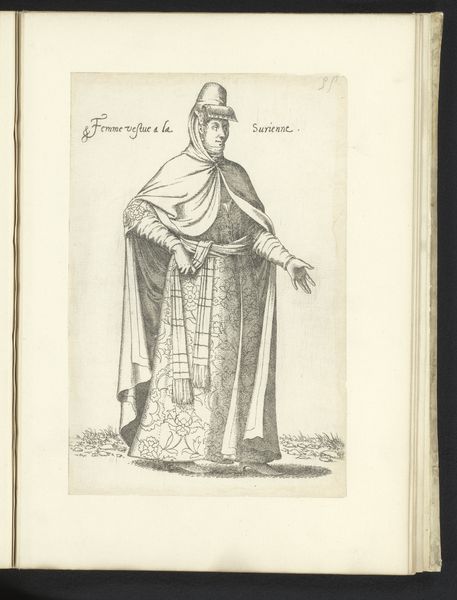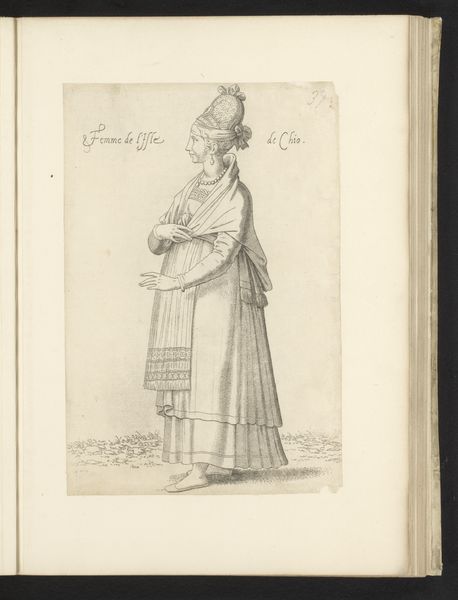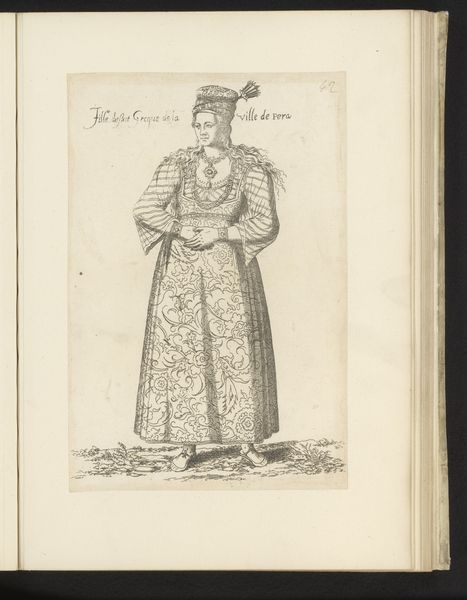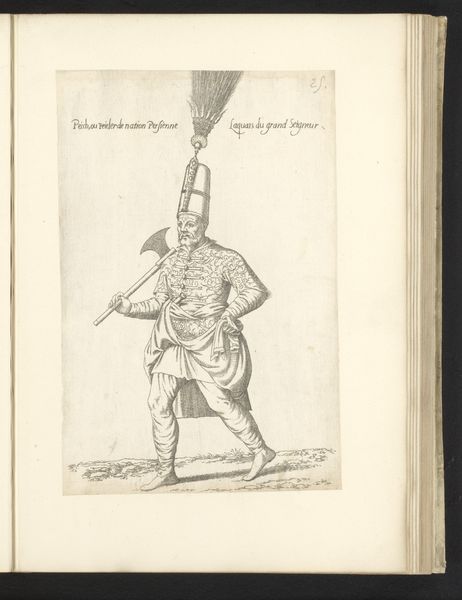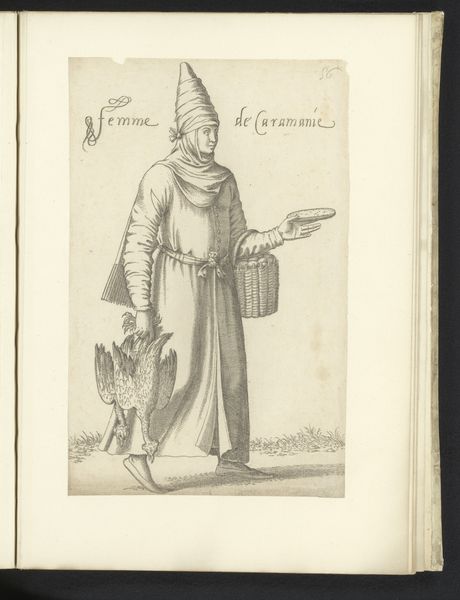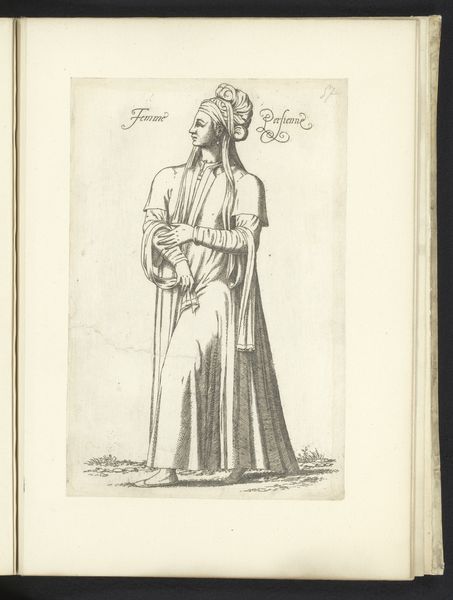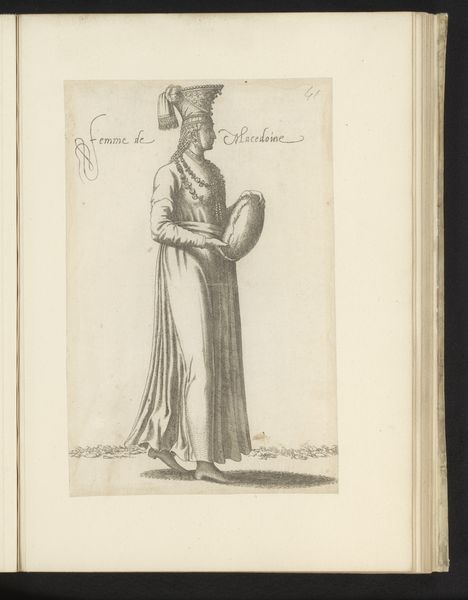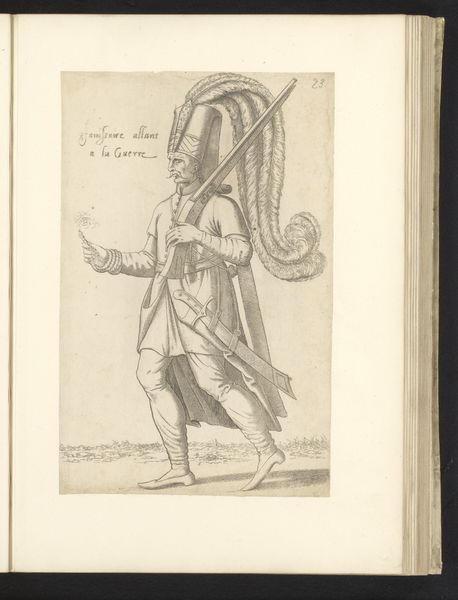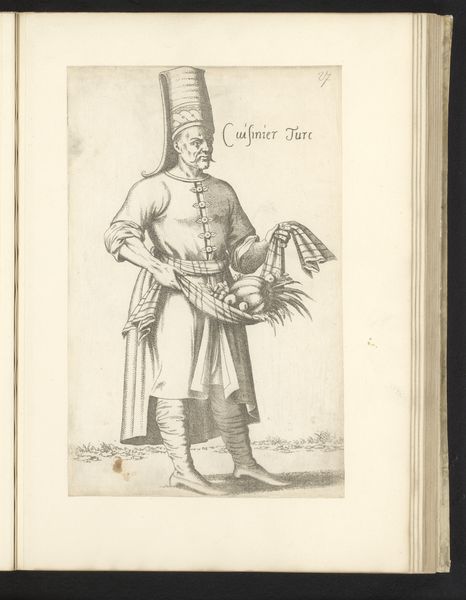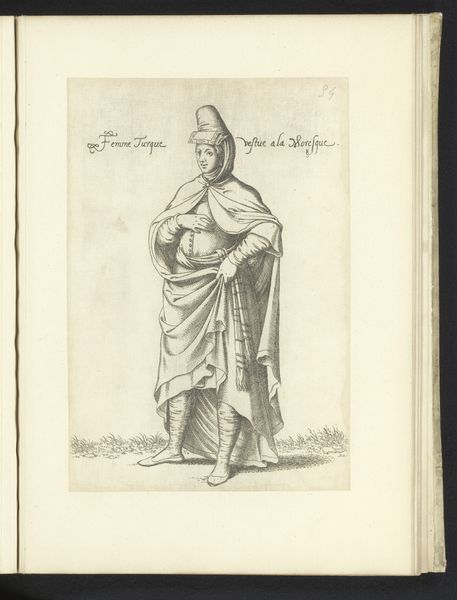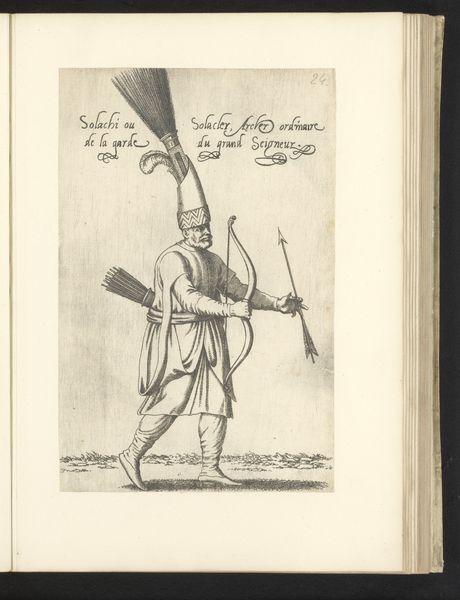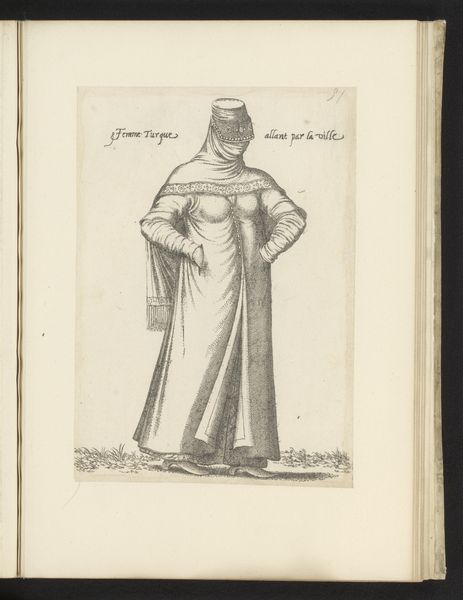
drawing, print, ink, engraving
#
portrait
#
drawing
#
pen drawing
# print
#
mannerism
#
figuration
#
ink
#
line
#
genre-painting
#
history-painting
#
engraving
Dimensions: height 267 mm, width 169 mm
Copyright: Rijks Museum: Open Domain
Curator: So, here we have "Gezagvoerder van de janitsaren," or "Commander of the Janissaries," an engraving by Léon Davent from the mid-16th century. What strikes you about it? Editor: It feels…official. The man is standing so formally, and the detail in his clothing is incredible. What do you see in this image beyond the surface? Curator: Well, this isn't just a portrait; it's a representation of power, and specifically, of Ottoman power viewed through a European lens. Consider the historical context. This image was created during a period of intense conflict and cultural exchange between Europe and the Ottoman Empire. How do you think that shapes its meaning? Editor: It makes me think about how power dynamics influence representation. Was this intended as a factual document, or was it also intended to project certain European ideas about the Ottoman Empire? Curator: Exactly! Think about how Davent chooses to portray this Janissary commander. What details does he emphasize? The ornate headdress, the elaborately patterned sleeves—these details speak to a European fascination with the exotic "other." We have to consider if this contributes to Orientalist narratives that solidify the perceived dominance of Europe. Editor: So it's not just a drawing of a man, it's an active participant in a larger conversation about cultural identity and power? Curator: Precisely. By studying images like this, we can unpack those power structures. What does it tell us about European perceptions of the Ottoman Empire? What might it obscure or misrepresent? It encourages us to challenge the established narratives and question the inherent biases present in historical depictions of different cultures. Editor: That’s given me a completely new way of viewing historical portraiture. It's not just about aesthetics; it’s about power and representation. Curator: Indeed. Understanding the social and historical context gives this portrait new power in a conversation about cultural differences.
Comments
No comments
Be the first to comment and join the conversation on the ultimate creative platform.
